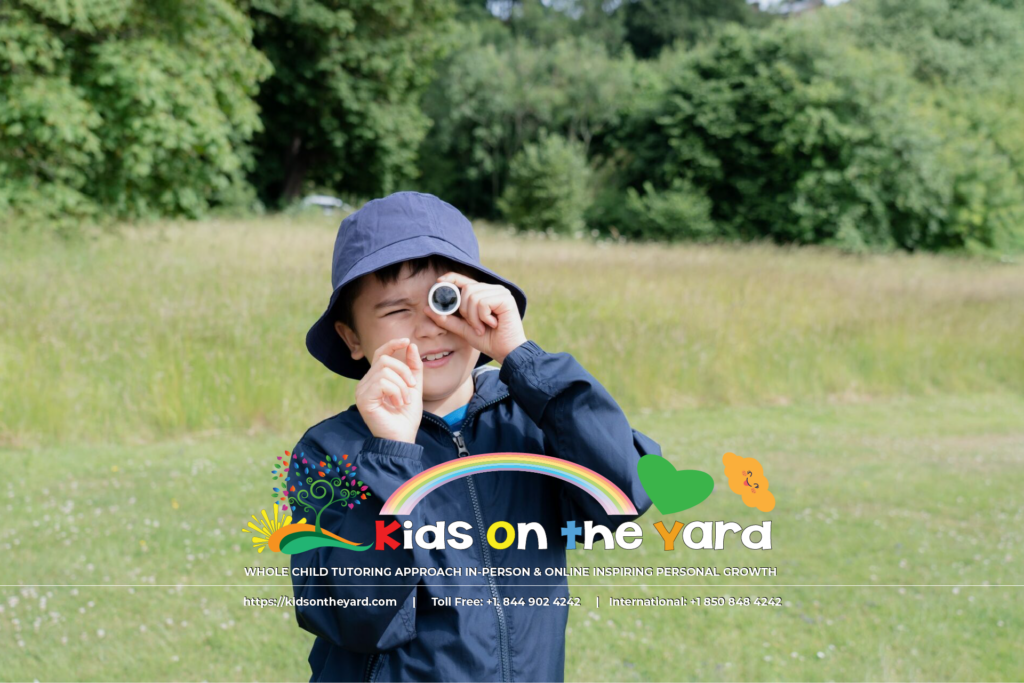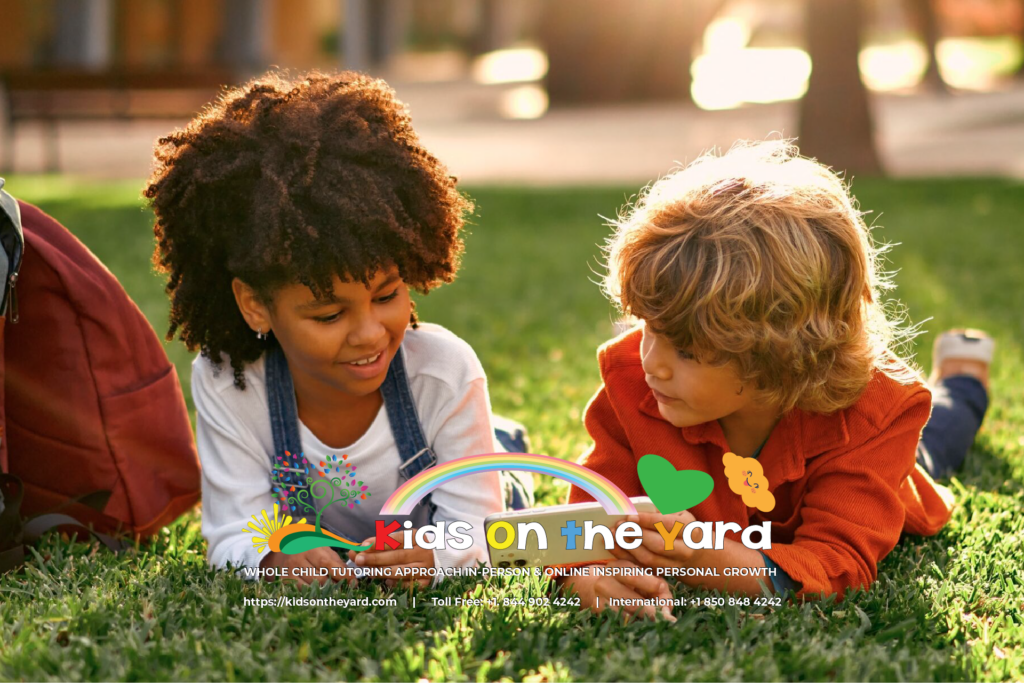|
Audio Article
|
Navigating the pivotal journey of second grade with your child marks a thrilling epoch of growth and exploration in their young academic life. As they shift from mastering the art of reading to uncovering the joys of reading for understanding, we—their most steadfast champions—play an integral role in nurturing the buds of independence and curiosity taking root in their minds. This essay unfolds the tapestry of cognitive and emotional milestones characteristic of a second grader’s development, laying out a compass for parents to guide these eager learners. Embracing the rainbow of learning strategies tailored to auditory, visual, and kinesthetic learners, this guide illuminates paths to enrich your child’s literacy, numeracy, and vital life skills while fostering a partnership with educators that will illuminate your child’s scholastic voyage.
Understanding Your 2nd Grader’s Learning Development
Unlocking the Wonders: How a 2nd Grader’s Brain Blossoms with Learning
Parents and educators watch in amazement as our little ones mature and develop. The second-grade year is a particularly magical time, full of growth and discovery, especially within a child’s brain. Understanding how a second grader’s brain learns and grows allows us to support this incredible journey better.
Firstly, it’s crucial to grasp that a second grader’s brain is rapidly developing. Neurons, the cells that transmit information throughout the brain, are growing at lightning speed. This growth spurt enables children to absorb various academic and social skills. During this period, children transition from learning to reading to reading to learning, a pivotal shift that lays the groundwork for future academic success.
At this stage, the brain also advances in executive functions, which are like the control center for cognitive abilities. These functions include attention, memory, and self-regulation. You may notice this in the classroom as a second grader’s improved ability to follow more complex instructions, stay focused on tasks, and begin to work independently.
Engagement and interaction play crucial roles in a second grader’s learning. Interactive and hands-on activities stimulate various brain parts, producing more robust neural connections. Whether solving a new math problem, participating in a group science project, or engaging in imaginative play, these children are wiring their brains for more sophisticated thought processes.
Language development takes center stage, too. A rich vocabulary is essential, and second graders are at the perfect age to be introduced to more complex words and ideas, which helps deepen their comprehension and expression. Encouraging reading at home, exploring new topics together, and simply having conversations nurture this growth.
Fostering a love for learning and promoting a growth mindset positively impacts brain development at home. When children understand that intelligence can be developed, they’re more likely to embrace challenges, learn from mistakes, and persist in the face of setbacks. This attitude supports brain growth and learning resilience.
A nurturing environment, coupled with stimulating, engaging tasks and a positive mindset, is the garden in which a second grader’s brain flourishes. Celebrate each learning milestone and encourage curiosity, for it’s within this rich soil that the roots of lifelong learning take hold.

Fostering Literacy and Numeracy Skills at Home
Supporting Literacy and Numeracy at Home: A Guide for Parents
Are you eager to help your child thrive in literacy and numeracy but unsure where to start?
Whether your little one is piecing together letters or your older child is tackling multiplication, you can play a pivotal role in their educational journey.
Here’s how to turn your home into a hub of learning:
Embrace Everyday Opportunities:
Incorporate reading and math into daily routines. Ask your child to help with cooking, and have them measure ingredients to practice fractions. When shopping, point out prices and discuss budgeting or discounts to weave in practical math skills. For literacy, read recipes or food labels together, developing familiarity with words and numbers.
Make Time for Books:
Set aside time for reading together. Choose a variety of genres to expose your child to different storylines and information. Ask questions about the plot and characters to improve comprehension and analytical thinking. Encourage them to explain their thoughts and predictions to develop critical thinking skills.
Utilize One-on-One Live Online Tutoring:
Leverage the benefits of one-on-one live online tutoring to enhance your child’s learning experience. This personalized approach can be particularly effective for second-grade students. Here’s how to make the most of it with Kids on the Yard’s Educators.
Personalized Attention: Your child receives individualized attention, allowing the tutor to address specific learning needs and adapt the pace accordingly.
Flexibility: Online tutoring offers scheduling flexibility, making it easier to find convenient times for sessions without the constraints of physical location.
Engaging Interactions: Live interaction with a tutor keeps your child engaged and promotes active participation, fostering a positive learning experience.
Instant Feedback: Immediate feedback helps correct mistakes, reinforces positive behaviors, and ensures a deeper understanding of concepts.
Tailored Learning Materials: Tutors can customize learning materials to match your child’s current curriculum, providing targeted support for school-related challenges.
Play Math and Word Games:
Board games and card games can make learning fun and interactive. Scrabble or Boggle, for instance, expands vocabulary and spelling skills, while games like Monopoly or Yahtzee offer opportunities to practice math in a playful setting.
Create a Literacy-Rich Environment:
Your home should be an oasis of written words. Charts, labels, and posters can immerse your child in text and numbers. An accessible bookshelf with various reading materials invites exploration and independent learning.
Encourage Writing:
Writing is paramount in literacy. Encourage your child to keep a journal, write stories, or compose letters to family members. This not only practices their writing skills but also helps them process their emotions and thoughts.
Discuss Real-World Math:
Present math as a useful tool rather than a school subject. Discuss distances, speed, time, and money. This approach will help them see math as relevant, and it can demystify more complex concepts.
Offer Constructive Feedback:
When reviewing homework or discussing schoolwork, focus on positive reinforcement. Highlight what they’ve done well before gently guiding them through mistakes. This approach fosters resilience and a positive attitude towards tackling challenges.
Incorporating these strategies can bolster your child’s literacy and numeracy skills. The home can be an extension of the classroom, where learning is as natural as breathing. Through your guidance and encouragement, you will aid their educational success and instill invaluable life skills. Let’s cherish each step of their learning journey!

Social and Emotional Skills Development
Cultivating Social and Emotional Growth in Second Graders
In the bustling world of second graders, where literacy skills blossom and brain growth surges, we mustn’t overlook the vast importance of social and emotional development. These skills are the bedrock of a child’s ability to navigate life’s challenges and triumphs, interact with peers, and grow into impactful learners and contributing members of society.
Social and emotional skills enable our young learners to recognize and manage their emotions, demonstrate caring and concern for others, establish positive relationships, make responsible decisions, and handle interpersonal situations effectively. Such competencies are intertwined with academic success and are just as critical as cognitive skills.
But how can parents foster this crucial development? The answer lies in the simple and the intentional actions taken every day.
Encourage Empathy: Teaching empathy begins at home. Parents can foster empathy by discussing emotions openly, understanding others’ feelings, and encouraging children to consider different perspectives. Children mirror the compassion they’re shown, so be a model of kindness.
Promote Teamwork: Group activities, whether sports, club involvement, or family projects, teach second graders about collaboration and the joy of achieving goals together. Highlight the importance of each member’s contribution and celebrate team accomplishments, big or small.
Teach Conflict Resolution: Conflicts are part of growth. Instead of simply stepping in to resolve disputes, guide children through expressing their feelings, listening to others, and finding a middle ground. This cultivates critical thinking and negotiation skills.
Engage in Role-Playing: Children can practice responses to various social situations through role-playing scenarios, which builds confidence and social acumen. Role-playing provides children with a safe environment to explore reactions and consequences, whether dealing with sharing, peer pressure, or expressing opinions.
Reward Positive Behavior: When children display social and emotional maturity, such as sharing without being asked or showing resilience after a setback, acknowledge their progress. Positive reinforcement encourages them to continue nurturing these behaviors.
Offer Choices: Allowing children to make choices fosters independence and decision-making skills. Whether selecting an afternoon activity or choosing what to pack for lunch, these small decisions can empower second graders and boost self-esteem.
Lead by Example: Parents are children’s first teachers; nothing teaches better than an example. Show them how to navigate social situations, manage stress, and communicate effectively
through your own actions. Your children are always watching and learning from you.
Set Time for Reflection: At the end of each day, take a moment to reflect with your child on their experiences. Discuss what they felt good about, what challenges they faced, and how they overcame them. Reflection deepens emotional understanding and instills a habit of self-improvement.
These strategies complement the vital steps toward nurturing a growth mindset and curating a supportive learning environment. Remember that the journey to developing social and emotional skills is ongoing; every experience is an opportunity to learn and grow. Parents can help ensure second graders thrive academically, socially, and emotionally by committing to the vital task of fostering these skills.

Communicating with Teachers and the School
Building Bridges: Strengthening Parent-Teacher Communication
In the vibrant world of primary education, where each day brings new discoveries and challenges, the partnership between parents and teachers is a crucial one. Effective communication holds the key to unlocking the best educational experiences possible for our children. As we work towards empowering lifelong learners, let’s explore how we can enhance this essential dialogue for the mutual benefit of all.
Firstly, embrace regular, scheduled communication. Whether through parent-teacher conferences, monthly newsletters, or a classroom app, consistent updates create a transparent and trusting relationship. This doesn’t mean overwhelming each other with daily emails but establishing a rhythm that keeps both parties informed and engaged.
Openness is the cornerstone of any strong relationship. When discussing your child’s progress or concerns, approach honestly and respectfully. Teachers are there to support your child’s educational journey, so sharing insights about your child’s interests or struggles at home can lead to tailored strategies for success in the classroom.
Listening is just as essential as sharing. Teachers bring a wealth of experience and expertise to the table. Parents can gain valuable insights by hearing the teacher’s observations and recommendations. When both parties listen actively, they work together more effectively to support the child’s development.
Be proactive and solution-focused. If you notice a potential issue, bring it up sooner rather than later. However, don’t just present the problem—brainstorm potential solutions. The joint effort in problem-solving fosters a spirit of collaboration and shows the child that their support network is proactive and positive.
Participate in school-related activities. Attend events, volunteer, or join the PTA. Being involved shows your child you value their education and strengthens your connection with the school community. It provides an informal setting to interact with the teachers and staff.
Remember to celebrate the triumphs. Recognizing academic achievements, character, and effort reinforces the positive behaviors contributing to lifelong learning. Share these successes with teachers, and let them join in the celebrations. This positivity bolsters the morale of students and educators alike.
Empathy goes a long way. Teachers handle complex classrooms and face numerous challenges daily. A kind word or a note of appreciation can brighten a teacher’s day and fuel their dedication to nurturing your child’s growth.
Finally, embrace the teacher’s perspective. Sometimes, the approach a teacher takes may differ from your expectations. Before jumping to conclusions, consider the rationale behind their methods. They are trained professionals with insight into educational practices—trust their expertise, but don’t hesitate to ask questions for clarity.
Leverage the skill of your One-on-One Tutor:
Talking directly with the school helps build a team to support your child’s learning journey when using services like Kids on the Yard, where real teachers are involved.
When you join Kids on the Yard, collaborating with your child’s school is included in our services and free of charge.
In summary, effective parent-teacher communication is about balancing updates with understanding, proactive problem-solving with listening, and involvement with empathy. By investing in this collaborative relationship, parents and teachers can provide the most supportive and enriching environment for children to thrive as lifelong learners. As we continue to guide our wonderful young minds, let’s keep the lines of communication open, positive, and always centered around the child’s best interests.
As parents, we stand as watchful gardeners in the flourishing landscape of our children’s education, watering the seeds of knowledge with patience and encouragement. Considering the jewels of insight shared here, we equip ourselves to tend more effectively to our second graders’ blooming social, emotional, and intellectual lives. Strengthening these young minds while crafting enduring bonds with their teachers, we ensure that each child’s educational path is paved with support, understanding, and cooperative growth. Remember, the story of our involvement and dedication is penned daily in the achievements and smiles of our children as they revel in the wonders of learning and discovery.
Final Thought:
Discover a world at Kids on the Yard where we believe in the incredible potential of your children. Here, they can dream, create, pursue, achieve, and become their own heroes. Our dedicated educational team is here to support your child by filling learning gaps and clarifying any concepts that might not have been fully grasped during regular school sessions. Plus, our online programs come with a free service that leverages communication with the school, ensuring a comprehensive and collaborative learning experience for your child. Unlock the possibilities with Kids on the Yard!


